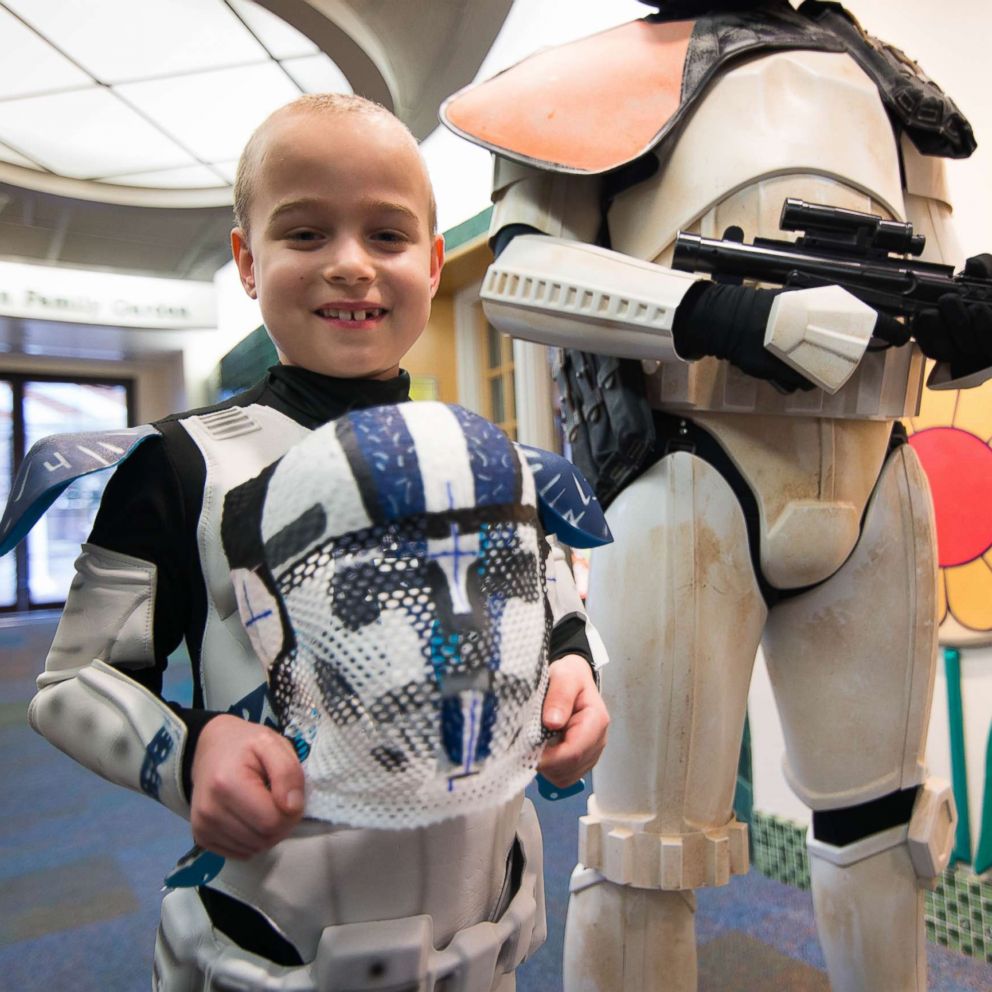Michael Strahan's daughter battles brain tumor: What to know about medulloblastoma
Isabella Strahan was diagnosed in October with a malignant brain tumor.
For the past two months, Michael Strahan's 19-year-old daughter Isabella has faced a private health battle, fighting medulloblastoma, a type of brain tumor.
Isabella Strahan was a freshman at the University of Southern California when an MRI scan in October led to her diagnosis of medulloblastoma, a cancerous and fast-growing brain tumor that develops in the cerebellum, the back of the brain where movement and coordination are controlled, according to the Preston Robert Tisch Brain Tumor Center at Duke University, where she is being treated.
In an interview that aired Thursday on "Good Morning America," Michael and Isabella Strahan spoke to Robin Roberts about their decision to share Isabella's health issue publicly, describing it as a decision they hope will help others.
"This is something that is so personal that I didn't know if it would be something that she would want to share," Michael Strahan told Roberts. "But her idea was, 'I want to share it and I want to help other people,' and that goes into the spirit of who she's always been."

Isabella Strahan, a model who recently launched a campaign with Sephora, told Roberts that she doesn't want to "hide" her cancer journey. Having undergone brain surgery in late October, followed by rehabilitation and six weeks of radiation treatment, she will soon begin a chemotherapy regimen led by doctors at Duke University, where her twin sister Sophia is a freshman.
"With my platform, I hope to just kind of be a voice and be a person who people who maybe are going through something similar, going through chemotherapy or radiation, can look at and just hear and just watch, or find something interesting about their day," she said. "I'm just excited for that."
This week, as she prepares to begin chemotherapy, she is also launching a YouTube series to document her journey, in partnership with Duke Children's Hospital & Health Center.

In addition to being a source of hope for others, Isabella Strahan's decision to share her journey may also turn a spotlight on the need for more funding to develop better treatment options for brain tumors, particularly when it comes to children, according to the doctor overseeing her care, Dr. David Ashley, a neuro-oncologist and director of Duke University's Preston Robert Tisch Brain Tumor Center.
"It's an important moment in history because we now have the tools to make the difference," Ashley told "GMA." "We know how these brain tumors work. We know the molecular biology. We have new therapies that we could put towards them, targeted therapies, immunotherapies, we just need the resources to put those things into action."
Here are five questions answered about medulloblastoma.
1. Who is affected by medulloblastoma?
Medulloblastoma primarily affects young kids between the ages of 5 and 9, but can be diagnosed in people of all ages, according to Ashley.
He said that while there are some genetic conditions that can predispose a person to medulloblastoma, for others, including Isabella Strahan, who does not carry any of those genetic conditions, getting medulloblastoma is almost like a "lightning strike."
Ashley said that with medulloblastoma, a tumor might emerge from precursor cells that are present from the time a person is in utero.
"We know that these tumors arise from seed cells in the brain, particularly in the back of the brain, so-called stem cells," Ashley said. "It's likely that the first events of these sorts of tumors happen either around or before the time of birth. At that point, it's not a cancer, it's probably a precancerous cell, and it sits there and, in a sense, gestates through someone's life until another genetic or other event occurs within that cell that makes it grow into a tumor."
Medulloblastoma is the "most common malignant brain tumor of childhood," accounting for around 20% of all childhood brain tumors, according to estimates published in the Journal of Clinical Neuroscience. Approximately 500 new cases of medulloblastoma are diagnosed in children each year in the United States.
2. What are symptoms of medulloblastoma to watch for?
Because medulloblastoma is located in the back of the brain, in the area that controls coordination, symptoms of the tumor can include clumsiness or difficulty walking, fatigue, changes in vision and hearing and changes in basic skills, like handwriting.
Ashley said that headaches are also a symptom of medulloblastoma, particularly if the headaches are persistent (i.e. lasting more than a few days); are associated with vomiting or a change in behavior, like difficulty walking; or represent a change, like a new or different patterns of headaches.
A strong, unbearable headache that appears suddenly can also be a symptom that should prompt medical attention, according to Ashley.
Because this cancer is rare and the tumors are fast-growing, Ashley says doctors do not recommended that everyday people get MRIs or other imaging as a preventative measure. Instead, people should seek medical care promptly if they experience new headaches or other neurological symptoms.
3. How is medulloblastoma treated?
The typical course of treatment for medulloblastoma is surgery to remove the tumor, followed by radiation and chemotherapy.
Each patient's exact treatment plan for medulloblastoma though depends on several factors, including the location and type of tumor and whether or not the tumor has spread.
Medulloblastoma is divided into four molecular groups -- SHH medulloblastoma, WNT medulloblastoma, Group 3 medulloblastoma and Group 4 medulloblastoma -- that doctors use to help determine the right type of treatment, according to the National Cancer Institute.
4. What is the prognosis for people with medulloblastoma?
Just as with treatment, a person's prognosis for surviving medulloblastoma depends on several factors, including the molecular group, as well as the patient's age and whether the tumor has spread.
More than 70% of people survive five years past their diagnosis and beyond, according to the National Cancer Institute.
Children under the age of 3 diagnosed with medulloblastoma may have lower survival rates because the treatment options for that age group are limited, according to Ashley.
"Brain tumors are the most common cause of cancer-related deaths in childhood, and they cause enormous emotional and financial strain on families," Ashley said. "We've got to do better at the treatments, which are inadequate. We do cure a lot of kids with brain tumors, but at the moment, many of those children are going to need radiation and chemotherapy, and that's not right. We shouldn't be doing that."
5. What can be done to improve brain tumor research and treatment?
Ashley said he would like to see more funding directed to brain tumor research, given the number of people diagnosed each year with malignant, or cancerous, brain tumors -- between 20,000 and 30,000 in the United States alone.
"I think this is a medical emergency," Ashley said. "And there should be a large amount of funding towards research that helps people and ultimately can prevent brain tumors, or at least impact them more meaningfully."
According to the Children's Cancer Research Foundation, a nonprofit organization focused on pediatric cancer research, childhood cancer research funding is less than 10% of the federal government funds available for research into adult cancers.







